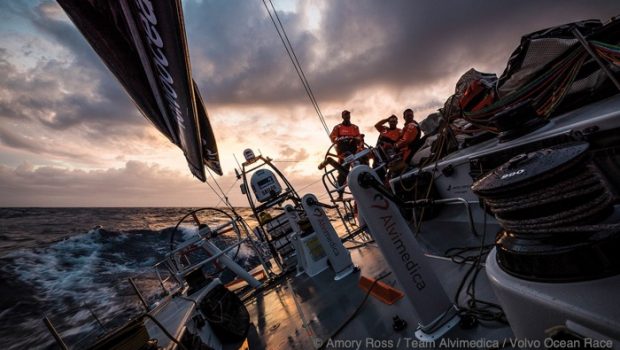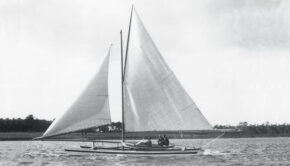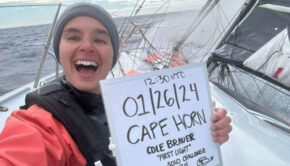Instinct crucial for night helming
Published on February 10th, 2022
One of the most experienced ocean racing skippers in the world, Chris Nicholson, shares advice on night helming with Yachting World’s Andy Rice.
Chris Nicholson’s prowess in 18ft Skiffs and three World Championship titles in the early days of the 49er Olympic dinghy drew the attention of Grant Dalton when he recruited the Australian to join his crew for the 2001-02 Volvo Ocean Race on board the Volvo 60, Amer Sports One. His skills in offshore racing, in particular, make him an expert when it comes to talking about night helming.
Nicholson had been somewhat economical with the facts at the job interview with his new boss, as back then ‘Nico’ had next to no experience of sailing out of sight of land. But Dalton recognized the potential of this new breed of skiff sailor for understanding the demands of helming twitchy, high-speed race yachts like the VO60.
Nicholson showed he was worth the gamble, proving to be one of the fastest natural helmsmen of the boat, particularly valuable at night when ‘feel’ and instinct become even more crucial. Here he reveals five of his best tips for fast and effective night helming. However, as he points out: “The primary focus at all times is to keep everybody safe, and a good place to start is to have a clear compass heading to steer to.”
1. Have a safe number
Have a clear number in mind that you should be steering to. If the boat feels like it’s getting twitchy, know what your safe number is to bring it to a feeling of safety.
Don’t just rely on the electronic instruments either, if you’ve got a binnacle compass, use that too. If there’s a darker cloud, or a star, or a fishing boat, or if you can rely on any other external references [do that] because quite often on a wet boat like the Volvo 70 or 65 you’ll lose sight of the instruments with the water coming over the deck.
You’ve also got to be sensitive to the heel of the boat so that you can tell what heel angle is through your body position and the angle of the forestay compared to the horizon. But if it is totally dark then you’re very reliant on the instruments – and that’s when you really need to know that safe true wind angle.
2. Sync with trimmers
As well as feeling the amount the boat is heeling, you need to feel how much grip you’ve got on the rudder, how close you are to losing control, what you can and can’t do. It’s always important to be dialed in with your trimmers, and never more so than in tricky conditions at night.
When you’re in sync with them you’re in a great position to deal with challenging conditions. You also have to have visibility of the waves to know when you’ve got a big wave coming in, or one that’s about to break, and be ready to call out ‘Bad wave!’, so that people on deck are hanging on and braced for white water. – Full story









 We’ll keep your information safe.
We’ll keep your information safe.